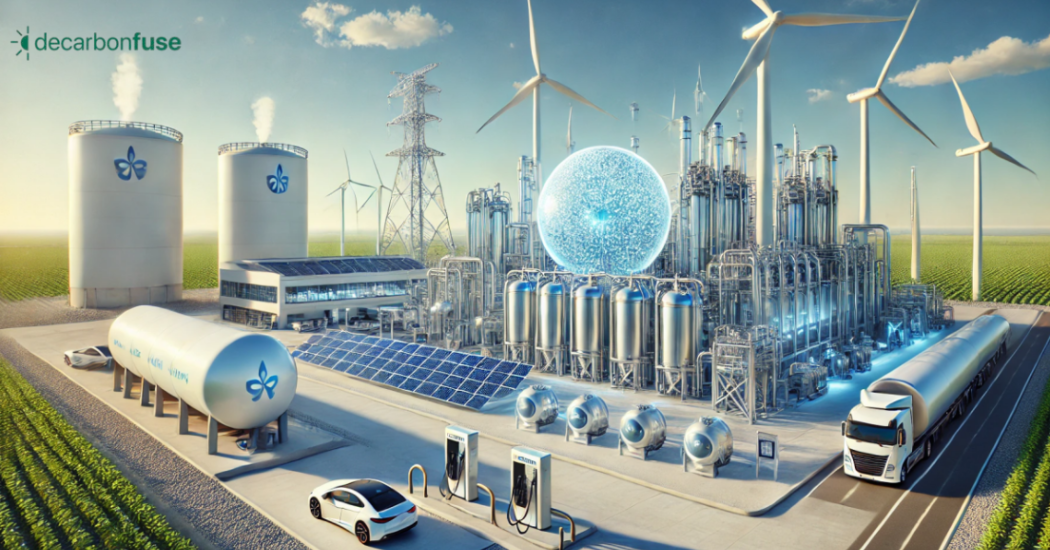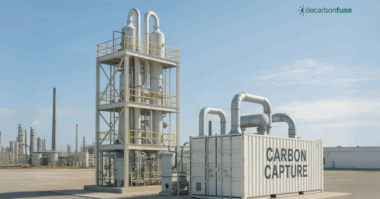The push for a sustainable hydrogen economy is gaining speed—but big hurdles still stand in the way. While hydrogen has the potential to reshape global energy markets, cost, infrastructure, and public perception are still major roadblocks. In North America, companies and governments are investing heavily in hydrogen, but the question remains—can it become affordable and scalable fast enough?
The High Cost of Hydrogen: Can Nuclear and Renewables Drive Prices Down?
Hydrogen production costs remain a major concern, especially in the U.S. and Canada. Green hydrogen—produced via electrolysis using renewable energy—costs around $5 per kilogram, making it significantly more expensive than fossil fuel alternatives. By comparison, natural gas-based blue hydrogen, which uses carbon capture, costs about $2 per kilogram.
One potential solution gaining traction in North America is nuclear-enabled hydrogen production. The U.S. Department of Energy (DOE) is funding projects that explore high-temperature electrolysis (HTE), which uses both electricity and heat from nuclear power plants to lower hydrogen production costs. The DOE’s Hydrogen Shot Initiative aims to reduce clean hydrogen costs to $1 per kilogram by 2031.
Similarly, in Canada, Ontario Power Generation (OPG) is working on hydrogen production using CANDU reactors, leveraging nuclear energy to create a steady supply of low-carbon hydrogen. These initiatives could help drive down costs and make clean hydrogen more competitive with fossil fuels.
 Infrastructure Gaps: Can the U.S. and Canada Build a Hydrogen Supply Chain?
Infrastructure Gaps: Can the U.S. and Canada Build a Hydrogen Supply Chain?
Even if clean hydrogen becomes cheaper, the lack of infrastructure remains a major barrier. North America lacks a well-developed hydrogen transport and storage network, making large-scale deployment difficult. The key issues include:
- Limited hydrogen refueling stations for vehicles
- Lack of pipelines for hydrogen transport
- High costs of hydrogen storage
To address this, the U.S. Bipartisan Infrastructure Law has allocated $8 billion to develop regional hydrogen hubs across the country. These hubs—designed to centralize hydrogen production, storage, and distribution—are expected to launch by 2027.
In Canada, Hydrogen Canada (H2CAN) and the government are investing in hydrogen refueling stations, focusing on corridors between Vancouver, Calgary, and Toronto. With major automakers like Toyota and Hyundai expanding their fuel-cell vehicle fleets, these investments are crucial for building a hydrogen-based transportation network.
Public Perception and Safety Concerns: Overcoming ‘Hydrogen Anxiety’
Another major challenge is public perception and acceptance of hydrogen technologies. Many communities are skeptical about hydrogen projects, particularly due to safety concerns over storage and transport.
However, hydrogen has a strong safety record when handled properly. The National Renewable Energy Laboratory (NREL) and Canada’s CSA Group are leading efforts to update hydrogen safety standards. At the same time, companies are focusing on public education campaigns to dispel myths about hydrogen being too volatile or dangerous for everyday use.
A key approach is to build hydrogen projects in industrial areas, where public resistance is lower. California’s Hydrogen Valley Project, backed by the California Energy Commission, is an example of a community-driven approach to hydrogen deployment.
 The Role of North America in the Global Hydrogen Race
The Role of North America in the Global Hydrogen Race
While Europe and Asia are leading in hydrogen adoption, North America is catching up. The U.S. and Canada have vast renewable energy resources, strong industrial demand, and government-backed hydrogen strategies. However, to compete on a global scale, the region must:
- Accelerate hydrogen infrastructure development
- Ensure policies support long-term hydrogen adoption
- Foster private-sector investment in hydrogen innovation
Hydrogen has the potential to transform heavy industry, transportation, and power generation—but only if costs come down, infrastructure expands, and public trust grows.
Conclusion: Will 2025 Be the Year Hydrogen Takes Off in North America?
With billions in funding and new technology breakthroughs, North America is positioning itself as a major player in the hydrogen economy. But challenges remain. Hydrogen must become cheaper, easier to transport, and widely accepted by the public to reach its full potential.
STEPHEN TUTIN, strategic and commercial manager at EDF, highlighted the importance of nuclear-enabled hydrogen production: “We think this is a way of driving down costs… But also nuclear science has a lot of infrastructure in place already.”
As governments and industries push forward, 2025 could be a pivotal year for scaling hydrogen projects and shaping the future of clean energy in North America and beyond.




